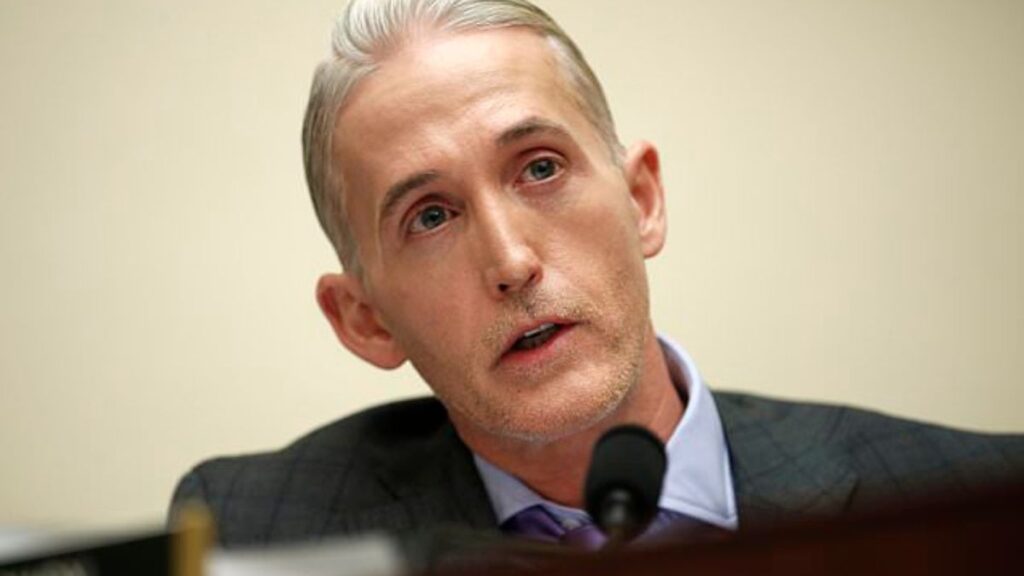Trey Gowdy is a name that resonates in the world of politics. Known for his sharp debates and unwavering stance on various issues, he has made quite an impact during his time in Congress. However, recent whispers surrounding Trey Gowdy forehead surgery have taken center stage, igniting curiosity among fans and critics alike.
What prompted this transformation? Is it merely a cosmetic enhancement or something deeper? As rumors swirl around him, we delve into the details of Gowdy’s journey through surgery—examining not just the procedure itself but also its implications on public perception and body image within the political arena. Join us as we uncover the truth behind Trey Gowdy forehead surgery journey!
Rumors and speculation about Trey Gowdy Forehead Surgery
For years, Trey Gowdy has been a prominent figure in American politics. With his distinctive appearance and charismatic presence, he attracted attention both on and off the screen.
Recently, whispers began circulating about potential cosmetic enhancements. Speculation swirled around the idea of Trey undergoing forehead surgery to smooth out wrinkles or refine his profile.
Social media platforms buzzed with theories and opinions from fans and critics alike. Some praised him for taking initiative regarding personal aesthetics while others raised eyebrows at the thought of a politician altering their natural look.
The rumors gained traction quickly, fueled by images that seemed to show a noticeable change in his forehead area. Fans speculated whether this was merely an illusion or indicative of something more significant at play behind closed doors.
Confirmation of the procedure by Gowdy himself
Trey Gowdy recently addressed the swirling rumors regarding his forehead surgery. In a candid interview, he confirmed that he had indeed undergone the procedure.
Gowdy spoke openly about both the decision-making process and the recovery experience. He emphasized that it was not a spur-of-the-moment choice but something he considered for quite some time.
He expressed relief in finally sharing this aspect of his life with his supporters. The former congressman noted how personal appearances can affect public perception, especially in politics.
By confirming the surgery himself, Gowdy aimed to dispel any myths or speculation surrounding his appearance changes. His honesty was refreshing in an environment often marked by ambiguity regarding cosmetic procedures among public figures.
Reasons for undergoing the surgery and its impact on his appearance
Trey Gowdy underwent forehead surgery for several reasons, primarily motivated by personal confidence and public perception. In a profession heavily scrutinized for appearances, he recognized that looking his best could positively influence how people viewed him.
The impact on his appearance has been notable. Many have remarked on the smoother contours of his forehead and a more youthful look overall. This change has sparked conversations about aging in politics and the role of physicality in leadership roles.
Gowdy’s decision also reflects broader societal trends where cosmetic procedures are increasingly normalized. By choosing to address aspects of his appearance, he challenges the stigma around such choices among public figures. It opens up dialogue about self-care and self-improvement in high-stakes environments like politics.
Comparison of before and after photos
Before and after photos of Trey Gowdy forehead surgery reveal a noticeable transformation. The changes are subtle yet significant, showcasing his commitment to self-improvement.
In the before images, Gowdy’s forehead appears more prominent. His expressions seem slightly harsher due to the deeper lines that come with age and experience in politics.
Post-surgery photos highlight a smoother appearance. The refined contours give him a fresher look without erasing his unique character.
The difference emphasizes how cosmetic procedures can subtly enhance one’s features while maintaining authenticity. Many supporters appreciate this new chapter in his journey, noting that he still looks like himself—just more rejuvenated.
Visual comparisons often spark discussions about personal choices in public life; they invite opinions on whether such alterations should matter for politicians known for their policies rather than appearances.
Public reaction to the news
The public reaction to Trey Gowdy forehead surgery has been a mixed bag. Some supporters praise him for embracing change and prioritizing his self-esteem. They see it as a bold move, showcasing confidence in an industry often scrutinizing appearance.
Conversely, critics have taken to social media with skepticism. Many question whether such procedures distract from the serious nature of political discourse. It’s fascinating how personal choices can ignite widespread debate.
Memes and jokes flooded platforms like Twitter and Facebook almost immediately after the news broke. The internet has a way of amplifying both admiration and ridicule simultaneously.
Amid the chatter, some individuals expressed empathy, understanding that everyone struggles with body image at some point in their life. This highlights how relatable these concerns are across various demographics, even among high-profile figures like Gowdy.
Importance of body image in politics
Body image plays a critical role in politics. The way politicians present themselves can impact public perception significantly. Voters often associate appearance with credibility and trustworthiness.
A polished look can enhance a politician’s appeal, allowing them to connect more effectively with constituents. In an age dominated by social media, first impressions matter even more.
Moreover, the pressure to maintain an ideal body image can dictate choices around cosmetic procedures or personal grooming habits. This reality highlights the intersection of politics and societal standards of beauty.
It’s not just about aesthetics; it’s also about confidence. When politicians feel good about their appearance, they often perform better under scrutiny and media attention.
This dynamic raises important questions about authenticity versus public expectation in political life. As society evolves, so too does the conversation surrounding body image within the realm of politics.
Other politicians who have undergone cosmetic procedures
The world of politics isn’t just about policies and debates; it also involves public perception. Many politicians have opted for cosmetic procedures to enhance their appearance.
Former President Bill Clinton is rumored to have had some work done, including skin treatments that keep him looking youthful. His charisma remains a significant part of his appeal.
California Governor Gavin Newsom has openly discussed the importance of maintaining a polished look, suggesting he might not shy away from minor enhancements.
Senator Lindsey Graham has faced speculation regarding changes in his appearance over the years as well. The pressure to look good can be intense in such a scrutinized position.
Even former First Lady Michelle Obama’s sleek style sparked conversations about image management among political figures. These examples highlight how appearances can play an essential role in political careers.
Conclusion: The importance of transparency in public figures’ personal choices
Trey Gowdy’s journey with forehead surgery has sparked a wide array of discussions. The political landscape often emphasizes the importance of maintaining a certain image, and Gowdy’s decision to undergo cosmetic surgery reflects that reality. As public figures navigate their careers, they frequently face scrutiny not just for their policies but also for how they present themselves.
Transparency in personal choices can create an open dialogue between politicians and the public. It helps demystify assumptions surrounding cosmetic procedures and can foster understanding about the pressures faced by those in the spotlight. When leaders share their experiences candidly, it encourages others to embrace authenticity—whether it’s regarding appearance or other aspects of life.
The reactions from both supporters and critics highlight society’s ongoing fascination with body image in politics. These conversations are essential as they challenge norms and encourage acceptance across various platforms. Acknowledging such decisions allows us to appreciate the human side of our elected officials while pushing towards a more inclusive dialogue around self-improvement and personal choice in all its forms.







